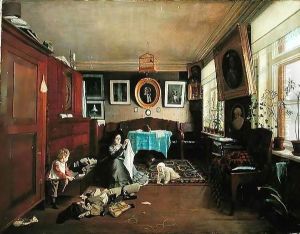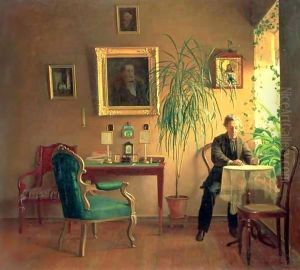Aleksei Alekseevich Bobrov Paintings
Aleksei Alekseevich Bobrov was a distinguished Russian artist, born in 1867 in the Russian Empire. His artistic journey began in an era marked by significant social and cultural transformation in Russia, navigating through the tumultuous final decades of the Tsarist regime, the upheaval of the Russian Revolution, and into the early years of the Soviet Union. Bobrov's oeuvre reflects a deep engagement with the evolving artistic and ideological currents of his time, from the waning influence of Romanticism to the emergent paradigms of Realism and beyond.
Educated at the Imperial Academy of Arts in Saint Petersburg, Bobrov was part of a vibrant community of artists who were exploring new artistic expressions and themes. His education and early career coincided with a period of intense debate and experimentation within Russian art circles, as artists sought to reconcile traditional forms and subjects with the demands of a rapidly changing society. Bobrov’s work from this period demonstrates a keen interest in the lives of ordinary Russians, a theme that would remain central to his artistic project throughout his life.
In the wake of the 1917 Revolution, Bobrov, like many of his contemporaries, grappled with the challenges and opportunities presented by the new Soviet state. His art from the 1920s and 1930s often reflects the ideological imperatives of Socialist Realism, the state-sponsored artistic style that sought to depict the Soviet people and their achievements in a positive light. Yet, even as he navigated these constraints, Bobrov's work retained a personal and humanistic perspective, focusing on the resilience, struggles, and joys of everyday life.
Bobrov's contribution to Russian art was not confined to his paintings alone. He was also involved in teaching, passing on his skills and insights to the next generation of artists. His commitment to art as a means of social commentary and human connection made him a respected figure among his peers. Aleksei Alekseevich Bobrov's death in 1937 marked the end of a career that had spanned some of the most tumultuous decades in Russian history. His legacy, however, continues to inspire those who appreciate the power of art to capture the essence of human experience against the backdrop of historical change.

